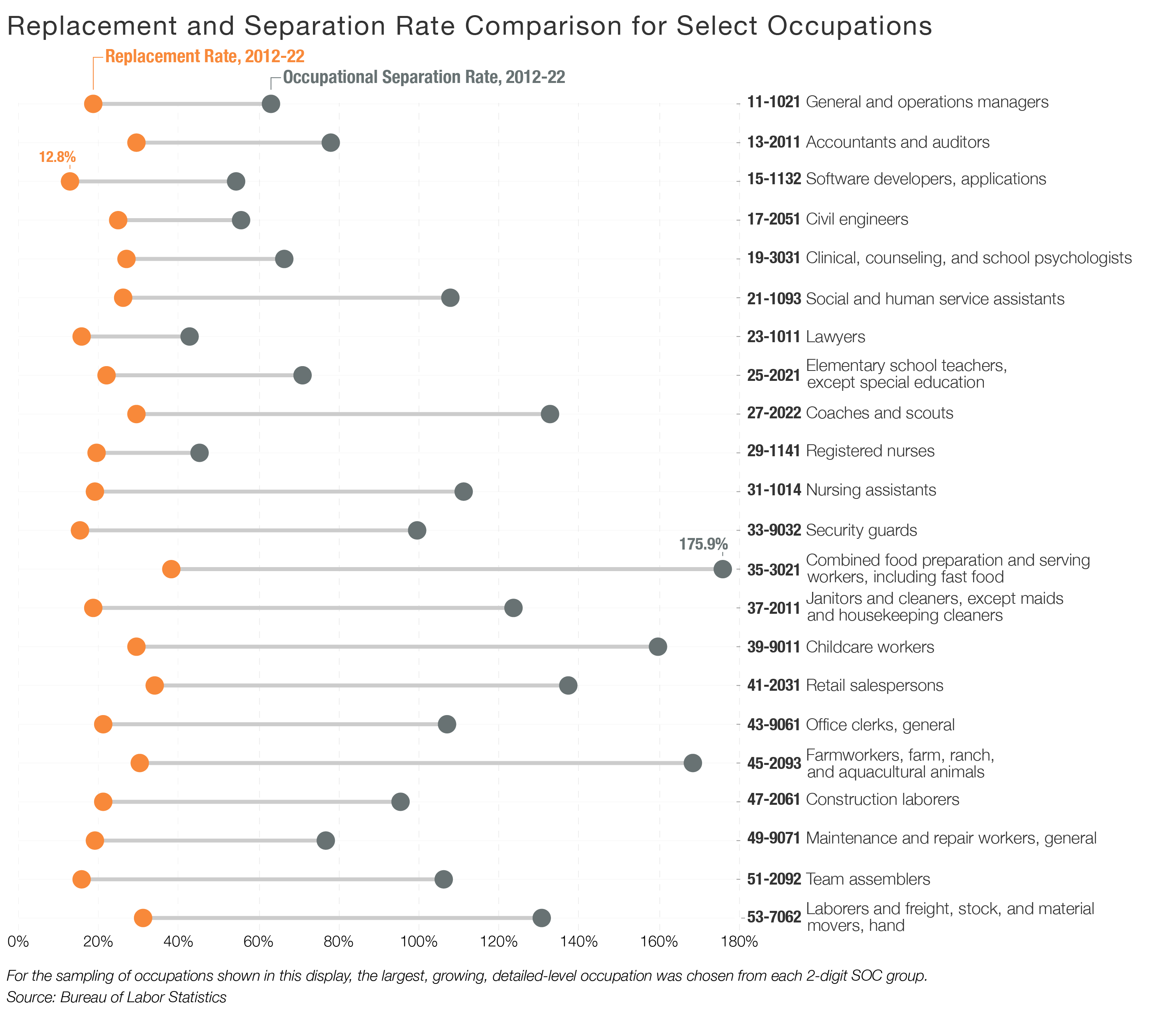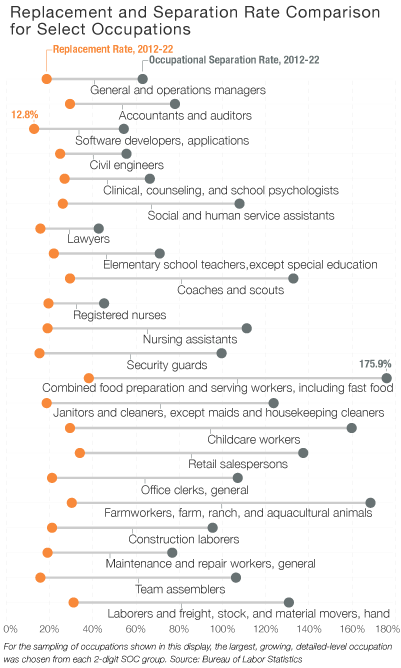A heads-up if you use occupation replacement rates in your work: new rates are being developed and are planned to be released in two years…and it looks like they will be very, very different. On average, over four times larger.
Right—four times larger; that is not a misprint.
Occupation replacement rates are developed by the Bureau of Labor Statistics (BLS) to describe the number of workers who leave their occupation and need to be replaced by new entrants into the occupation. The rates describe demand due to workers leaving the workforce (such as retiring) plus those moving from one occupation to another. Replacement demand is important in the fields of workforce development and education because—along with growth demand—it helps gauge the future training needs for specific occupations.
When publishing replacement estimates, the BLS includes the caution that the replacement needs are “underestimated” due to limitations in the methodology used for calculating these rates. In turn, in our JobsEQ system which uses these BLS rates, we reference the same caveat.
The Bureau of Labor Statistics has developed a new method that they believe is a more accurate measure for this type of occupation demand. Accompanying this change, the BLS plans to change terminology from “replacement rate” to “separation rate,” partially to help highlight the change in methodology. Regardless of the name change, the BLS emphasizes that the “new method is designed to measure the same concept as the old methodology: workers who leave their occupation and need to be replaced by new entrants into the occupation.”[1]
While the new data have not yet been officially released, the Bureau of Labor Statistics has posted some “experimental” results for comparison purposes. Even though the rates for some occupations change only slightly—dentists, for example—the new rates for most occupations are substantially larger. As one example, the estimated replacement demand for machinists (SOC 51-4041) increases roughly by a factor of four when put in terms of “occupational separations.” Using the old method, replacement needs for machinists during the period from 2012 through 2022 were estimated at about 91,000 workers; using the new method, separations for machinists in the same period are estimated to be over 392,000.
The reason for the large increase from the current replacement rates to the new separation rates, to quote the BLS, is that “the current method undercounts openings because it only accurately measures workers who follow a traditional career path—entering an occupation at a young age, working in the same occupation for many years, then retiring—which is not the case for many workers in most occupations.”[2] The new method is generally described as being “more robust and more statistically sound,”[3] the details of which can be found on the BLS website.
To be complete, there is another technical difference between replacement and separation rates in how each deals with declining occupations, but that change is not as impactful on the change in magnitude in the rates compared to the other methodological changes.
The bottom line is that even though the new official rates may not be available for another two years, this impending change highlights the need to keep in mind the caution about replacement rates: the current rates should be considered only as a minimum measure of training needs due to replacements.[4] It is a caveat of particular importance, given that the degree of underestimation may be severalfold.
[1] http://www.bls.gov/emp/ep_separations_faqs.htm
[2] Ibid.
[3] Ibid.
[4] For example, see the BLS description of that here: http://www.bls.gov/emp/ep_replacements.htm.
.png)

